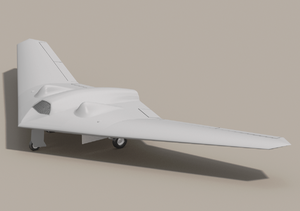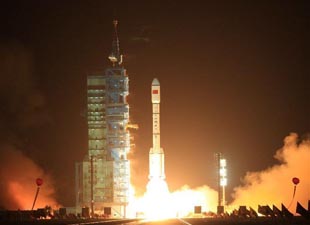CAPTURED RQ-170 STEALTH DRONE
Iran's declarations that it will reverse engineer the US drone that it grounded makes perfect sense as Washington has had its aircraft duplicated before, writes Peter Grier.
“It's been done before, by a country that at the time the United States considered technologically inferior,” Peter Grier wrote in the Christian Science Monitor on Thursday.
Grier says in August 1947, the USSR paraded a Tu-4 Bull aircraft, a replica of an American B-29 heavy bomber, which the Soviet government had impounded in 1944 after the aircraft was forced to make an emergency landing at a base in the Soviet Union.
Tehran has announced that it intends to carry out reverse engineering on a US RQ-170 Sentinel stealth aircraft which the Iranian Army's electronic warfare unit successfully brought down with minimal damage on Sunday, December 4, 2011.
The aircraft was flying over the northeastern Iranian city of Kashmar, some 225 kilometers (140 miles) away from the Afghan border.
“Iran isn't going to give it (the spy drone) back … no matter how nicely President Obama asks,” Grier added.
On Monday, US President Barack Obama broke days of silence on the downing of the sophisticated spy aircraft by Iran and made a request to Tehran asking for the return of the drone.
“We've asked for it back. We'll see how the Iranians respond,” Obama said.
Following the US plea, Iran's Defense Minister Brigadier General Ahmad Vahidi made it clear on Tuesday the US spy drone would remain in the country's possession as part of its national assets.
Also on Monday, former US Vice President Dick Cheney criticized the US president for failing to destroy the spy drone, saying Barack Obama should have ordered an airstrike to quickly destroy the downed high-tech unmanned aerial aircraft to prevent the Islamic Republic from subjecting it to examination.
On December 6, two US officials, speaking on condition of anonymity, confirmed to CNN that the drone had been part of a US Central Intelligence Agency (CIA) reconnaissance mission, involving the US intelligence community stationed in Afghanistan.
They said the reconnaissance capability of the drone enabled it to gather information from inside Iran by flying along Afghanistan's border with the Islamic Republic.
The RQ-170, which is similar in design to a US Air Force B-2 stealth bomber, is designed and developed by the US Lockheed Martin Company.
Tehran says the US spy mission was a “hostile act,” adding it would lodge a complaint with the United Nations over the violation of its air sovereignty by the intelligence-gathering aircraft. It has urged the world body to condemn such contravention and adopt necessary measures to end the 'dangerous and illegal' acts.
Lockheed Martin RQ-170 Sentinel at a glance
| RQ-170 Sentinel | |
|---|---|
| Artist's rendering | |
| Role | Unmanned aerial vehicle |
| Manufacturer | Lockheed Martin |
| Introduction | 2007 |
| Primary user | United States Air Force |
Operators
- United States
- United States Air Force
- Air Combat Command
- 432d Air Expeditionary Wing – Creech Air Force Base, Nevada
- 30th Reconnaissance Squadron – Tonopah Test Range Airport, Nevada
- 432d Air Expeditionary Wing – Creech Air Force Base, Nevada
- Air Combat Command
[edit]Specifications (RQ-170)
Data from [37]
General characteristics
- Crew: 0
- Length: 14 ft 9 in (4.5 m)
- Wingspan: 85 ft (26 m) estimated
- Height: 6 ft (1.8 m) estimated
- Powerplant: 1 × Garrett TFE731 or General Electric TF34[10] turbofan
Performance
- Service ceiling: 50,000 ft (15,240 m) (estimated)































.jpg/800px-USS_Zumwalt_(DDG-1000).jpg)























